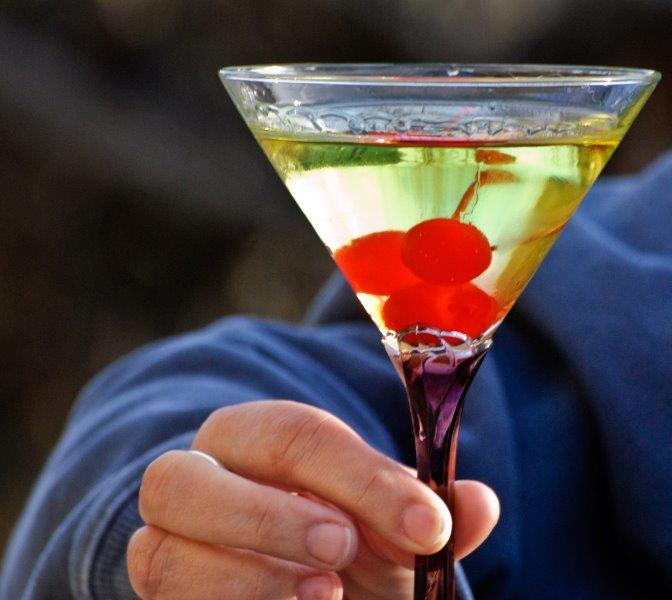
What is a cocktail?
A little of this & little of that!
By Hassett Gravois
When did we first hear about the cocktail?
I always have been a big fan of finding out where words come from and that includes the origin of the cocktail.
The first recorded use of the word (not referring to a horse) is found in The Morning Post and Gazetteer in England in early 1798.
The Oxford English dictionary cites the term as originating in the United States. The first recorded use of a cocktail as a beverage appears in The Farmer’s Cabinet in 1803:
“Drank a glass of cocktail—excellent for the head…Call’d at the Doct’s. found Burnham—he looked very wise—drank another glass of cocktail.”
However, the first definition of a cocktail as an alcoholic beverage appeared in 1806 in The Balance and Columbian Repository. The New York publication was answering a simple question: “What is a cocktail?”
Editor Harry Croswell wrote, “(a) Cock-tail is a stimulating liquor, composed of spirits of any kind, sugar, water, and bitters—it is vulgarly called bittered sling, and is supposed to be an excellent electioneering potion, in as much as it renders the heart stout and bold, at the same time that it fuddles the head. It is said, also to be of great use to a democratic candidate: because a person, having swallowed a glass of it, is ready to swallow anything else.”
What’s in the perfect cocktail?
There is a lack of clarity on the where cocktails first emerged. Traditionally, the drinks were a mixture of spirits, sugar, water and bitters but by the 1860s, a cocktail frequently included liquor.
A cocktail is made up of three principal ingredients: the base alcohol, the modifier and the perfume.
The base is the main liquor that creates the cocktail. It is the biggest part of the drink and not only determines the type of drink but also dictates what else can go into your cocktail creation.
For example, in an Old Fashioned, the base is whiskey, and thus considered a whiskey cocktail, whereas in a mojito, the rum is the base.
Mixing bases, such as gin with tequila, is a big no-no but this rule is frequently broken, like in a Long Island Ice Tea.
The modifier is an ingredient that compliments but doesn’t completely dominate the base. Without it, the drink is not a cocktail. It is the component that holds the drink together, adding a consistency, weight or texture, whether it be a juice, champagne, vermouth, or cream.
The perfume enhances the base alcohol and is typically the smallest element proportionately. It could be anything such as a fruit, nut, coffee, herbal liqueur, syrup or bitters, which sometimes brings a new dynamic to the drink with aromatic notes. The flavor agent can bring sweetness, bitterness or color to the drink and even in the tiniest amounts, it completes the balance of the cocktail.
Watch out for the myths!
Will mixing alcohol with energy drinks make you more drunk?
It’s easy to think the combination of an alcohol-induced buzz and an energy rush from caffeine will accelerate a feeling of inebriation, but energy drinks like Red Bull, Monster and Rockstar don’t actually enhance the relaxed feeling caused by a few drinks. Instead, caffeine hides the sedative effects that often cue you to stop drinking. That could trick you into thinking you have more energy than you actually do, which often leads to more drinking and eventually, a regrettable hangover the next morning.
The only exception is mixing alcohol with diet soda. It can increase intoxication but it’s the lack of sugar, not the caffeine content, which has an effect. This is why certain premixed/canned drinks get banned. The combination of too much alcohol and liquor could potentially be lethal.
Always enjoy cocktails responsibly. Here are a few classics mixed in with some of my own creations. Cheers!
Old Fashioned
1 Sugar cube
3 dashes Angostura bitters
1 Orange slice
3 oz. Bourbon whiskey
Place the sugar cube at the bottom of a rocks glass.
Saturate the cube with bitters.
Add one orange slice and muddle these ingredients.
Fill the glass with ice cubes, add the bourbon and stir well
Garnish with a second orange slice and a maraschino cherry.
Sidecar
2 oz. Cognac
1 oz. Cointreau
1 oz. Lemon juice
Shake with cracked ice and strain into a chilled cocktail glass rimmed with sugar. (Use a lemon).
St. Gin & Mr. Tonic
1 oz. St. Germain
1 1/2 oz. Gin
4 oz. Tonic
Pour in a highball glass filled with ice and stir.
Garnish with a fresh lime wheel.
Blue Moon
1 oz. Orange vodka
1 oz. Blue Curacao
Champagne
Rim the champagne glasses with blue cocktail sugar (using an orange).
Pour Blue Curacao and vodka then top with Champagne.
Serve immediately.
Absinthe Sour
1/4 oz. Absinthe
3/4 oz. Lemon juice
1/2 tbsp. Sugar
Shake with ice and strain into a shot glass.
Hassett Gravois is the famous Mixology Connoisseur and author. She is also Vegas 2 LA Magazines Beverage Director and Resident Mixologist










You must be logged in to post a comment Login